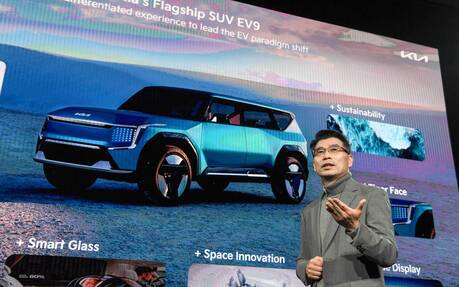Kia Promises 14 New EV Models by 2027 Including Two Pickups
Following yesterday’s announcement by Hyundai-Genesis (17 new EV models to be launched by 2030), it’s now sister company Kia’s turn to shift into a higher gear.
During the Investor Day virtual event held today in South Korea, CEO Ho Sung Song detailed a revised “Plan S “strategy that calls for 14 new EV models by 2027 (instead of 11 models by 2026) and annual sales of 1.2 million units globally by 2030, up 36 percent from the previous goal.
- Also: Hyundai Now Plans to Launch 17 New EVs by 2030
- Also: Hyundai-Kia to Invest $9 Billion to Build EVs in the U.S.
Kia will invest the equivalent of nearly $30 million CAD over the next five years.

Obviously, not all of these new models will land in North America. However, the company says it wants to deliver new solutions for all drivers, meaning different body styles and different price points.
Two of the 14 new EVs will be pickups, which will be a first for Kia. One of them is going to emerging markets, but the other will be sold on our shores. Unfortunately, that’s all we know about it at this point. Oh, but there’s this: electric midsize SUVs and pickups will be built in the U.S. as early as 2024.
Following the EV6 crossover and EV9 three-row SUV (the latter based on last year’s EV9 Concept and due to launch in 2023), we should see sedans, hatchbacks and more SUVs. Also, Kia promised that the EV6 won’t be the only one to offer a GT performance variant.

A first for Kia, the EV9 will also feature OTA (Over the Air) and FoD (Feature on Demand) services that will allow customers to selectively purchase software functions. In addition, it will be the first model to be equipped with Kia’s advanced new “AutoMode” autonomous driving technology, similar to GM’s Super Cruise or Ford’s Blue Cruise. From 2025, all new Kia vehicles will be equipped with connected car features.
Finally, a few words on batteries. Kia expects demand to increase significantly from 13 GWh to 119 GWh in 2030 due to the million or so EVs it plans to sell. It will source batteries from Indonesian joint ventures and other global partners, hoping to achieve 50 percent increased battery density and 40 percent lower costs by 2030.
